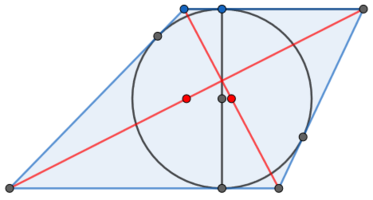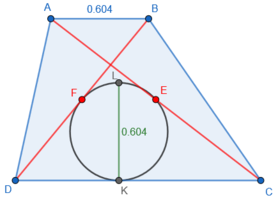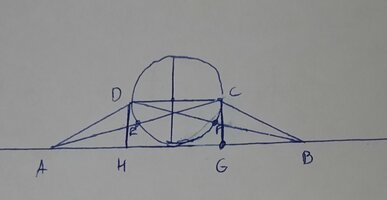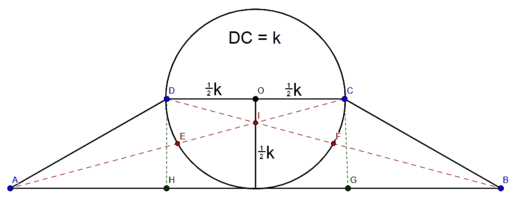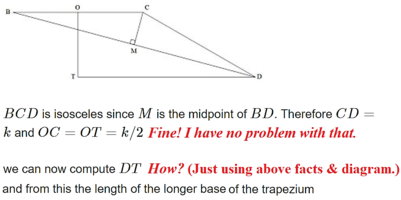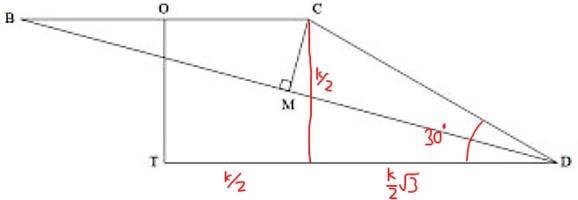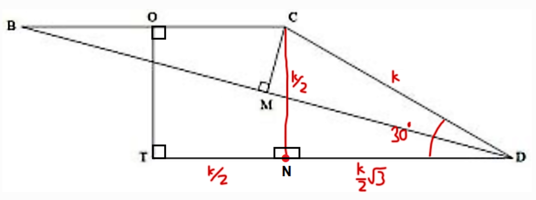MathIsEverything
New member
- Joined
- Sep 17, 2022
- Messages
- 14
Hi! I've been struggling with this problem. I already spent 2 hours and i couldn't think of anything. Maybe you guys can help me.
A circle is drawn in the trapezium, the diameter of which is the shorter base of this trapezium having length k. This circle is also tangent to the longer base of the trapezium and intersects its diagonals at their centres. Determine the area of this trapezium(in terms of k)
Thank you
A circle is drawn in the trapezium, the diameter of which is the shorter base of this trapezium having length k. This circle is also tangent to the longer base of the trapezium and intersects its diagonals at their centres. Determine the area of this trapezium(in terms of k)
Thank you

